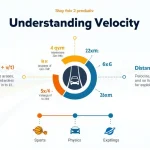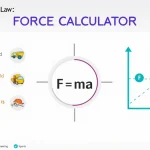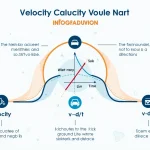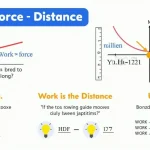Acceleration Calculator
Is this tool helpful?
How to Use the Acceleration Calculator Effectively
Step-by-Step Guide to Calculating Acceleration
Our Acceleration Calculator is a versatile tool designed to help you compute acceleration using various methods. Follow these steps to use the calculator effectively:
- Select the Calculation Method: Choose from three options:
- From Change in Velocity and Time
- From Net Force and Mass
- Using Kinematic Equations
- Enter the Required Values: Based on your selected method, input the necessary values:
- For Change in Velocity and Time:
- Initial Velocity (m/s): e.g., 0 m/s
- Final Velocity (m/s): e.g., 10 m/s
- Time Interval (s): e.g., 5 s
- For Net Force and Mass:
- Net Force (N): e.g., 50 N
- Mass (kg): e.g., 10 kg
- For Kinematic Equations:
- Initial Velocity (m/s): e.g., 0 m/s
- Final Velocity (m/s) (Optional): e.g., 20 m/s
- Displacement (m) (Optional): e.g., 100 m
- Time Interval (s) (Optional): e.g., 10 s
- For Change in Velocity and Time:
- Calculate: Click the “Calculate Acceleration” button to obtain the result.
- Review Results: The calculated acceleration will be displayed in m/s².
Understanding Acceleration: Definition, Purpose, and Benefits
Acceleration is a fundamental concept in physics that describes the rate of change of velocity over time. It is a vector quantity, meaning it has both magnitude and direction. Understanding acceleration is crucial for analyzing motion, predicting object behavior, and solving various problems in physics and engineering.
The Purpose of Acceleration Calculations
Calculating acceleration serves several important purposes:
- Analyzing motion patterns of objects
- Predicting future positions and velocities
- Designing transportation systems and vehicles
- Studying forces and their effects on objects
- Enhancing safety measures in various applications
Benefits of Using an Acceleration Calculator
Our Acceleration Calculator offers numerous benefits for students, educators, engineers, and physics enthusiasts:
- Time-saving: Quickly compute acceleration without manual calculations
- Accuracy: Minimize human error in complex calculations
- Versatility: Use multiple methods to calculate acceleration based on available data
- Educational value: Reinforce understanding of acceleration concepts
- Real-world applications: Apply theoretical knowledge to practical scenarios
Addressing User Needs and Solving Specific Problems
Calculating Acceleration from Change in Velocity and Time
This method is particularly useful when you have initial and final velocity measurements over a known time interval. The calculator uses the formula:
$$a = \frac{v – u}{t}$$Where:
- a = acceleration (m/s²)
- v = final velocity (m/s)
- u = initial velocity (m/s)
- t = time interval (s)
Example Calculation: A car accelerates from 0 m/s to 30 m/s in 6 seconds. The acceleration would be:
$$a = \frac{30 \text{ m/s} – 0 \text{ m/s}}{6 \text{ s}} = 5 \text{ m/s²}$$Determining Acceleration Using Net Force and Mass
This method applies Newton’s Second Law of Motion, which relates force, mass, and acceleration. It’s particularly useful in force analysis scenarios. The calculator uses the formula:
$$a = \frac{F}{m}$$Where:
- a = acceleration (m/s²)
- F = net force (N)
- m = mass (kg)
Example Calculation: A net force of 150 N is applied to an object with a mass of 30 kg. The acceleration would be:
$$a = \frac{150 \text{ N}}{30 \text{ kg}} = 5 \text{ m/s²}$$Kinematic Equations for Constant Acceleration
This method is versatile and allows for acceleration calculation using various combinations of known variables. The calculator employs the following kinematic equations:
$$v = u + at$$ $$s = ut + \frac{1}{2}at^2$$ $$v^2 = u^2 + 2as$$Where:
- v = final velocity (m/s)
- u = initial velocity (m/s)
- a = acceleration (m/s²)
- t = time (s)
- s = displacement (m)
Example Calculation: An object starts from rest (u = 0 m/s) and travels 80 meters in 4 seconds. Using the second equation:
$$80 = 0 \cdot 4 + \frac{1}{2}a \cdot 4^2$$ $$80 = 8a$$ $$a = 10 \text{ m/s²}$$Practical Applications and Use Cases
Automotive Engineering
Acceleration calculations are crucial in automotive design and testing. Engineers use these calculations to:
- Determine a vehicle’s performance capabilities
- Design efficient braking systems
- Optimize fuel consumption during acceleration
- Ensure safety standards are met for acceleration and deceleration
Example: An electric car accelerates from 0 to 100 km/h (27.78 m/s) in 4.5 seconds. Its acceleration can be calculated as:
$$a = \frac{27.78 \text{ m/s} – 0 \text{ m/s}}{4.5 \text{ s}} = 6.17 \text{ m/s²}$$Sports Science
In sports, understanding acceleration is vital for improving athlete performance and analyzing movements. Applications include:
- Measuring sprinters’ acceleration off the starting blocks
- Analyzing the acceleration of projectiles in sports like javelin or shot put
- Optimizing acceleration techniques in various sports
Example: A sprinter reaches a velocity of 10 m/s after 2 seconds from a standing start. The acceleration is:
$$a = \frac{10 \text{ m/s} – 0 \text{ m/s}}{2 \text{ s}} = 5 \text{ m/s²}$$Aerospace Engineering
Acceleration calculations are fundamental in aerospace design and mission planning:
- Designing rocket propulsion systems
- Calculating escape velocities for spacecraft
- Analyzing g-forces experienced by pilots and astronauts
- Planning trajectory corrections for space missions
Example: A rocket experiences a net force of 1,000,000 N during liftoff. If its mass is 50,000 kg, the initial acceleration is:
$$a = \frac{1,000,000 \text{ N}}{50,000 \text{ kg}} = 20 \text{ m/s²}$$Robotics and Automation
Acceleration calculations are essential in robotics for smooth and precise movements:
- Programming robotic arm movements in manufacturing
- Designing self-balancing robots
- Optimizing the motion of autonomous vehicles
- Ensuring safe human-robot interactions
Example: A robotic arm needs to move a 2 kg object with a force of 30 N. The acceleration of the object will be:
$$a = \frac{30 \text{ N}}{2 \text{ kg}} = 15 \text{ m/s²}$$Frequently Asked Questions (FAQ)
Q1: What is the difference between velocity and acceleration?
Velocity is the rate of change of position with respect to time, while acceleration is the rate of change of velocity with respect to time. In simpler terms, velocity tells you how fast an object is moving, while acceleration tells you how quickly the velocity is changing.
Q2: Can acceleration be negative?
Yes, acceleration can be negative. A negative acceleration means that the object is slowing down if it’s moving in the positive direction, or speeding up if it’s moving in the negative direction. This is often referred to as deceleration.
Q3: How does gravity affect acceleration?
On Earth, objects in free fall experience a constant acceleration due to gravity, approximately 9.8 m/s² downward. This acceleration is often denoted as ‘g’. In the absence of air resistance, all objects fall with this same acceleration, regardless of their mass.
Q4: What units are used for acceleration?
The standard SI unit for acceleration is meters per second squared (m/s²). Other units include feet per second squared (ft/s²) in imperial measurements, or g-force, which is a multiple of the standard acceleration due to gravity.
Q5: How is acceleration related to force?
According to Newton’s Second Law of Motion, the acceleration of an object is directly proportional to the net force acting on it and inversely proportional to its mass. This relationship is expressed as F = ma, where F is the net force, m is the mass, and a is the acceleration.
Q6: What is the difference between average and instantaneous acceleration?
Average acceleration is calculated over a finite time interval and gives the overall rate of change of velocity during that period. Instantaneous acceleration is the acceleration at a specific moment in time, calculated as the limit of average acceleration as the time interval approaches zero.
Q7: How does acceleration affect kinetic energy?
Acceleration changes an object’s velocity, which in turn affects its kinetic energy. The kinetic energy of an object is given by the formula KE = ½mv², where m is the mass and v is the velocity. As an object accelerates and its velocity increases, its kinetic energy increases quadratically.
Q8: Can an object have constant velocity but non-zero acceleration?
No, if an object has a constant velocity, its acceleration must be zero. Acceleration is the rate of change of velocity, so if velocity isn’t changing, there is no acceleration. However, an object can have constant speed but non-zero acceleration if it’s changing direction (like in circular motion).
Q9: How does air resistance affect acceleration?
Air resistance is a force that opposes the motion of an object through air. It increases with velocity and can cause the acceleration of a falling object to decrease over time, eventually reaching a terminal velocity where the acceleration becomes zero.
Q10: What is centripetal acceleration?
Centripetal acceleration is the acceleration experienced by an object moving in a circular path. It is always directed towards the center of the circle. The magnitude of centripetal acceleration is given by the formula a = v²/r, where v is the velocity and r is the radius of the circular path.
Conclusion
Understanding and calculating acceleration is crucial in many fields of science and engineering. Our Acceleration Calculator provides a user-friendly tool to compute acceleration using various methods, catering to different scenarios and available data. By leveraging this calculator, users can save time, ensure accuracy, and gain deeper insights into the motion of objects.
Whether you’re a student studying physics, an engineer designing a new product, or simply curious about the world around you, mastering the concept of acceleration opens up a wealth of knowledge about how objects move and interact. Continue exploring the fascinating world of motion and forces, and don’t hesitate to use our calculator to support your learning and problem-solving endeavors.
Important Disclaimer
The calculations, results, and content provided by our tools are not guaranteed to be accurate, complete, or reliable. Users are responsible for verifying and interpreting the results. Our content and tools may contain errors, biases, or inconsistencies. We reserve the right to save inputs and outputs from our tools for the purposes of error debugging, bias identification, and performance improvement. External companies providing AI models used in our tools may also save and process data in accordance with their own policies. By using our tools, you consent to this data collection and processing. We reserve the right to limit the usage of our tools based on current usability factors. By using our tools, you acknowledge that you have read, understood, and agreed to this disclaimer. You accept the inherent risks and limitations associated with the use of our tools and services.







